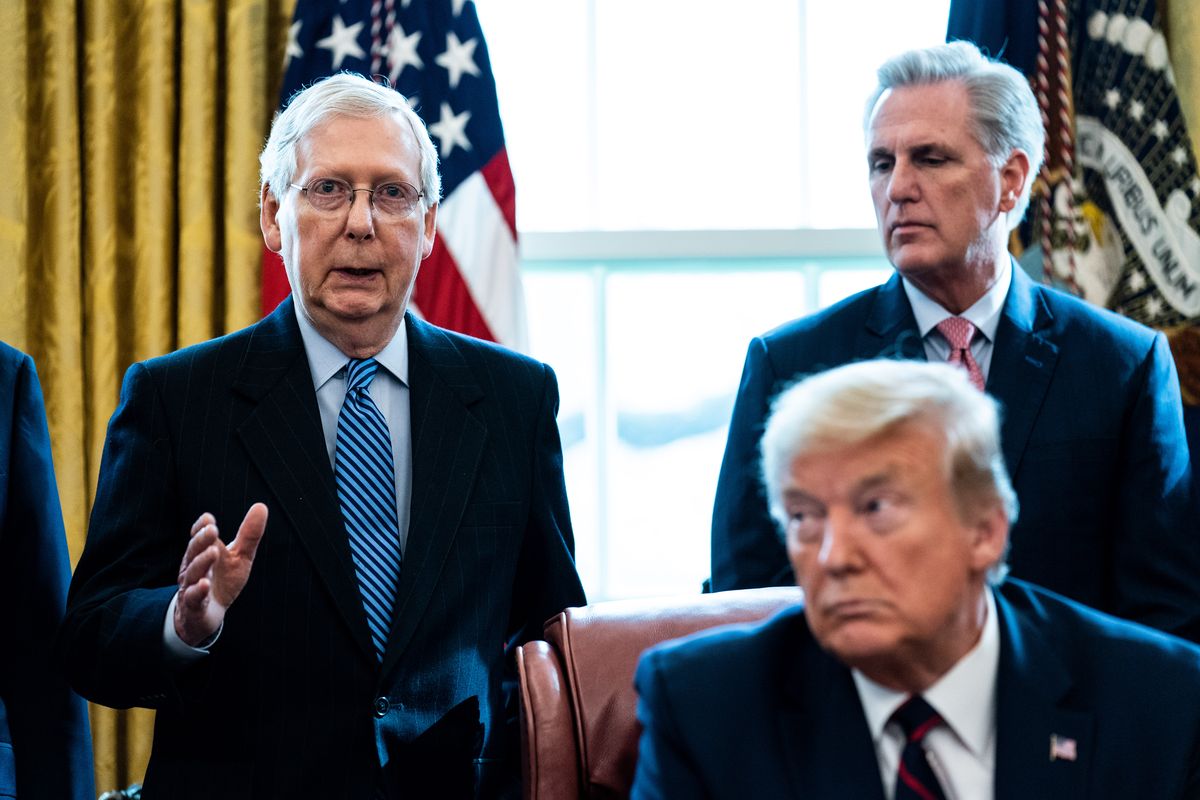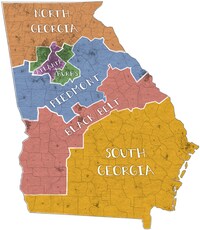
WASHINGTON — A Republican presidential candidate has not won the state of Minnesota since Richard M. Nixon’s victory there in 1972. But President Trump has long viewed it as the one that got away.
Mr. Trump barely set foot in the state during his 2016 campaign, and his field organization on the ground was nonexistent: The lone Trump campaign staff member working the state was moved to Colorado before Election Day. But Mr. Trump lost Minnesota to his former rival Hillary Clinton by 1.5 percentage points, or less than 45,000 votes.
“We almost won it,” Mr. Trump said during a visit this year to a trucking company in a Minneapolis suburb. The difference between a victory and a loss, he said, would have been coming to the state to give “one more speech.”
This time, the Trump campaign is determined not to let Minnesota go without trying. So on Thursday night, Mr. Trump will arrive in Minneapolis, one of the most Democratic congressional districts in the country, for his first political rally since House Democrats began an impeachment investigation that threatens to engulf his presidency.
It is a rare rally for Mr. Trump in a state he did not win in 2016, and takes him to the heart of opposition territory: In 2018, the city helped elect to the House Ilhan Omar, a Democratic woman of color who has become one of the president’s favorite foils.
Mr. Trump’s rally at Target Center will be bolstered by a “Women for Trump” event hosted by the second lady, Karen Pence, and Lara Trump, the president’s daughter-in-law, on Wednesday in St. Paul. Vice President Mike Pence will hold his own round table on Thursday in nearby Lakeville.
Meanwhile, Brad Parscale, the president’s campaign manager, is planning to pour tens of millions of dollars into the campaign’s Minnesota operation, compared with the $30,000 the Trump campaign spent on the state last cycle. The campaign already has 20 paid staff members in the state, and expects to expand to 100. And the campaign and the Republican National Committee are outspending Democrats by about four to one on digital advertising, according to campaign officials and local Democratic Party officials.
“It is a full-on major effort state campaign,” said Tim Murtaugh, a Trump campaign spokesman. “And we will have the resources behind it to make it count.”
Minnesota Democrats said it felt as if their state was a true battleground for the first time in decades.
“Over the last 25 years, I’ve never seen an investment as robust and deep this early by a Republican presidential candidate,” said Ken Martin, the chairman of the Minnesota Democratic-Farmer-Labor Party. Mr. Martin said it was clear to him that “Trump and the Republicans believe they can win and are doing everything to make it so.”
Few states in the Midwest exemplify Mr. Trump’s strengths, such as popularity in rural areas, as well as his weaknesses, such as his shaky standing in suburban areas, the way Minnesota does. Which group turns out in bigger numbers could determine who wins the state on Election Day.
If Mr. Trump succeeds in flipping Minnesota’s 10 electoral votes, it will probably mean that he has secured himself another four years in the White House. No Democratic candidate can carve a path to victory without Minnesota, and Trump officials are eager to put Democrats on defense there. One campaign official compared the dynamic to Republicans having to spend resources to defend a Republican stronghold like Indiana.
But the changing makeup of the state has made Minnesota something of a microcosm for the Trump campaign’s challenge as it builds him a solid infrastructure nationwide: This time isn’t last time.
“This election is much more a referendum on him and his performance as president,” said Geoff Garin, a Democratic pollster. “He has managed to turn a lot of voters off through his conduct and performance. It’s hard to overcome that with field organizing.”
Mr. Garin noted that the suburban vote in Minnesota was much more significant than in neighboring Wisconsin, and Mr. Trump was consistently polling poorly in suburbs. “A variety of factors have taken it from being a closely contested state to much more of a slingshot for Trump,” Mr. Garin said. “The kind of antics at his rallies that occur are unlikely to help him in Minnesota.”
To win Minnesota, Mr. Trump would have to gain about 45,000 more votes than he did in 2016, while keeping Democratic turnout roughly the same as it was last cycle. A poll commissioned before his visit Thursday by Alliance for a Better Minnesota, a group aligned with Democrats, showed that 49 percent of respondents favored an impeachment inquiry, compared with 44 percent who believed it was a bad idea.
The poll, conducted by Public Policy Polling, also found that 52 percent of respondents would vote for an unnamed Democratic opponent if the election were held today, compared with 42 percent who said they would vote for Mr. Trump.
“We had record turnout for a midterm election in 2018,” Mr. Martin said. “That was fueled in urban cores and suburbs. He’s going to have to do better than he did in the suburbs and exurbs, and we haven’t seen that happening.”
For their part, Trump campaign officials are more focused on the Iron Range, the mining communities in the northern part of the state. In 2016, for instance, Mr. Trump won the states’ Eighth District in the north by 16 points. President Barack Obama won it by six points in 2012. That is where Trump campaign officials see an urban-rural divide that is trending in their direction, while the election of progressive lawmakers like Ms. Omar has pushed voters further in the direction of Democrats in urban areas.
Iron Rangers in northern Minnesota have been fleeing the Democratic Party because of promises to end the fossil fuel industry, among others, according to local officials, who point to Representative Collin C. Peterson, a Democrat, as an example of the state’s changing politics. Mr. Peterson, who represents Minnesota’s Seventh District, won his race in 2012 by 26 points. In 2018, he eked out a victory with a much slimmer 4-point margin. In 2016, Mr. Trump won the Seventh District by 31.5 points.
But the rural regions in the state have also seen a loss of population, while the suburbs, where Mr. Trump has done little to expand his appeal with voters, have grown.
This week, Mr. Trump tried to capitalize on that divide by leaning into a fight with Jacob Frey, the Democratic mayor of Minneapolis, who wanted to charge the campaign about half-a-million dollars for the extra security required to host the presidential visit. Framing Mr. Trump as a victim, his campaign accused the mayor of trying to shut down the rally.
In a statement, the campaign called Mr. Frey a “radical leftist mayor” who was “abusing the power of his office and attempting to extort President Trump’s re-election campaign by conjuring a phony and outlandish bill for security in an effort to block a scheduled Keep America Great rally.”
The campaign ultimately settled the dispute without paying the additional funds. It was not clear whether the city or the arena would be footing the bill instead. But some Democrats said they worried Mr. Frey had inflamed a real divide in the state, emboldening people to go see Mr. Trump after a Democratic mayor appeared to try to tell them they could not.
The heated back-and-forth hinted at the aggrieved tone Mr. Trump plans to strike at the rally Thursday night. “The lightweight mayor is hurting the great police and other wonderful supporters. 72,000 ticket requests already. Dump Frey and Omar! Make America Great Again!” Mr. Trump wrote Tuesday on Twitter.
A version of this article appears in print on , Section A, Page 14 of the New York edition with the headline: Plan B After a Slim Loss: More Time in Minnesota. Order Reprints | Today’s Paper | Subscribe


